Adam Koch: Expanding boundaries
Published on April 15th, 2015
The town of La Ventana, Mexico hosted the first of three events on the 2015 KiteFoil Gold Cup tour for professional racers from around the world. The event was loaded with international talent and a large variety of board and foiling combinations from around the globe. Short, skinny, rounded edges, blunt noses, pointed tails, you name it, but nothing, stood out like Adam Koch’s entry, the Raptor. Here is an interview with Adam from PressureDrop.us…
What was the design concept?
After looking at hydrofoiling kiteboard designs over the years, I kept asking… “why do foilboards have to look like traditional kiteboards?” This never made sense to me. So after a year of learning this new discipline. I began to analyze what characteristics a foilboard had to have and perhaps what we could live without.
I felt it needed volume for light winds and those long distance journeys. It needed to behave at top speeds both in and out of the water. It needed to fit in a small car as well as existing board bags… Blah, blah… In general I was looking for something that would not buck me off at full speed. The board needed to go through the wave instead of over it. No more slapping down and sticking. No more fear of touching down.
So I began to study what was already out there in the existing hydrofoiling world… The Raptor was born.
It appears like a mini Moth, was there some correlation?
Yes, the Raptor was directly inspired by the Moth. With influence from the recent America’s Cup. I consulted with my friend Bora Gulari (Moth World Champion) on my ideas… He said, “just scale down a Moth!”
The Raptor’s original hull dimensions are from dividing a Moth by two. It made sense to begin where others already found success. Since I didn’t need to float a mast, rigging or sail I figured half size should be just fine. Plus the length calculation came within a few inches of my old board. Now I had an idea of what I was building.
From there I had the respected influence of (Big Wave Hydrofoil-Surfer) Paolo Rista in Maui. Paolo’s experience in boat design was essential in all the fine details and the construction.
Then we have the wings… which are pretty simple. I used my old hydrofoil board as a template to keep the same foot strap and foil mounting positions. From there I drew the outline of the winged deck around my feet. I air foiled it out a bit and built it super strong.
What are the dimensions?
When I first began she was 5’5″ in length. A few tail modifications later, I’m guessing she’s in the 5 foot range now. Her hull is 6 inches wide and 8 inches thick. The deck is 2 feet wide, two inches thick and just short of 4 feet long. I honestly didn’t measure much. I just went for it. Holding focus on the general design and the center of gravity.
What positive aspects did you glean?
After a humble process of figuring out how to ride her, I learned to forget what I knew from my old board in order to understand how to ride the new. Soon all doubt sailed away and the Raptor’s magic began to come to life. Her hull did not stick or drag in the water like before. Which is great in both light and strong wind conditions.
The center of gravity is farther back making it easier to balance. When resting on her own in the water. The wings tilt the board on its side from the buoyancy of the hull. This makes it really easy to both water start and to bite the wing in the water…. kind of using as a fin to drag out over shallow reef. The hull also acts as a keel when submerged and standing level on it. This creates lateral resistance in super light winds increasing line tension. More line tension equals power in kiteboarding.
Where did it excel?
Her design intentions all came true for the most part. Fast above and below the water, sShe destroys wave tops by turning them to raindrops. You instantly notice her reduced windage when going fast. Especially when heading into the wind. Her geometry seems to increase the riders leverage over the foil. I actually shortened the hydrofoils strut length by several inches to compensate for the extra hull thickness. This stiffened up the hydrofoil significantly. You truly notice the Raptors performance advantages when going upwind, in steep chop and in big chop. With the wave piercing nose and super thin wing tips, you can foil lower to the water without performance risk.
Where did it disappoint?
It needs some attention in the non-foiling-maneuverability department because of the long, narrow and deep hull. The obvious happens when it submerges. It wants to go straight. This is good at full speed, but adds too much difficulty when off the foil and moving slowly. As is, if you need to change directions quickly. You need to get back up on your foil. A big weakness at sticky points in the race.
Going back to the drawing board, what modifications are you looking at?
I would like to make the Raptor easier to maneuver when in the water and off the foil. I believe the answer is in more tail modifications. Perhaps the next one will be hollow core to save weight and increase its durability. In general I do have faith in the current design. I feel it has something to offer in efficiency. This Raptor project really was just an idea to help push foiling to the next level. I knew by making this board it would inspire people to evolve their designs. That’s what this experiment is all about. Expanding our sports boundaries!


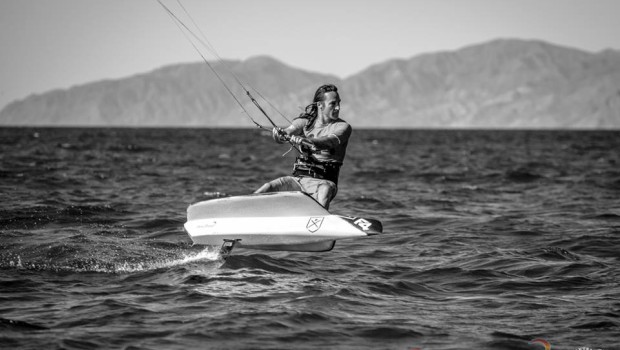

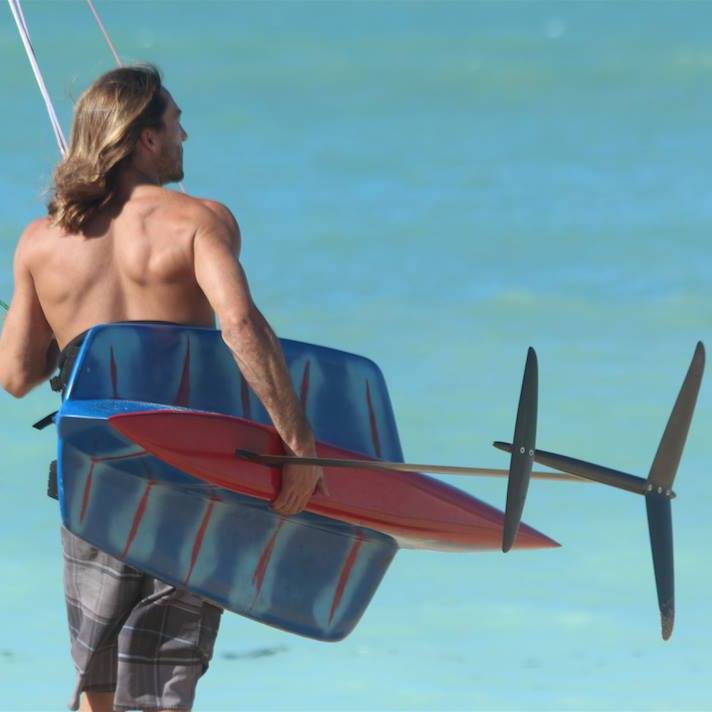

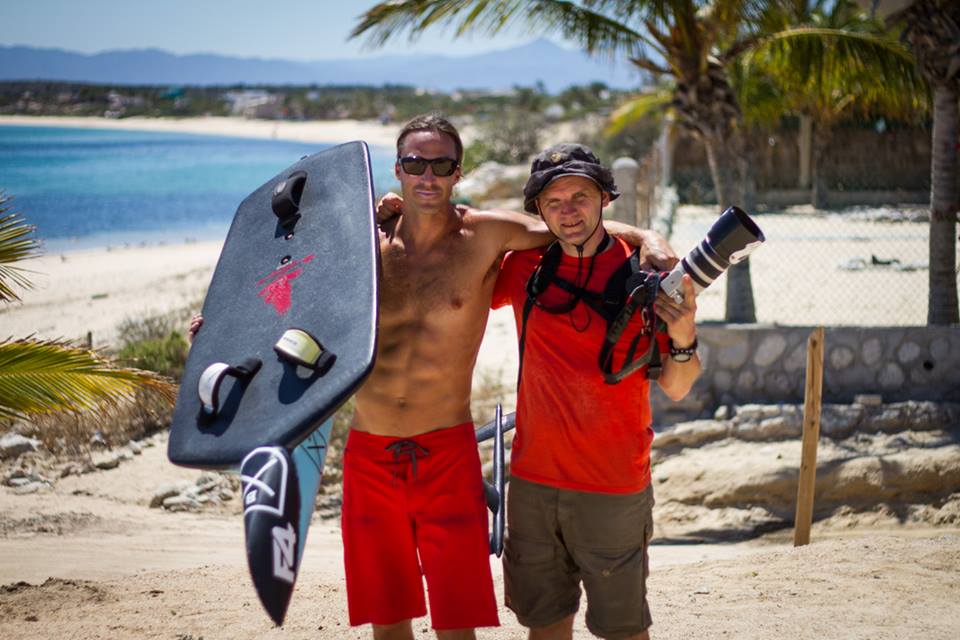
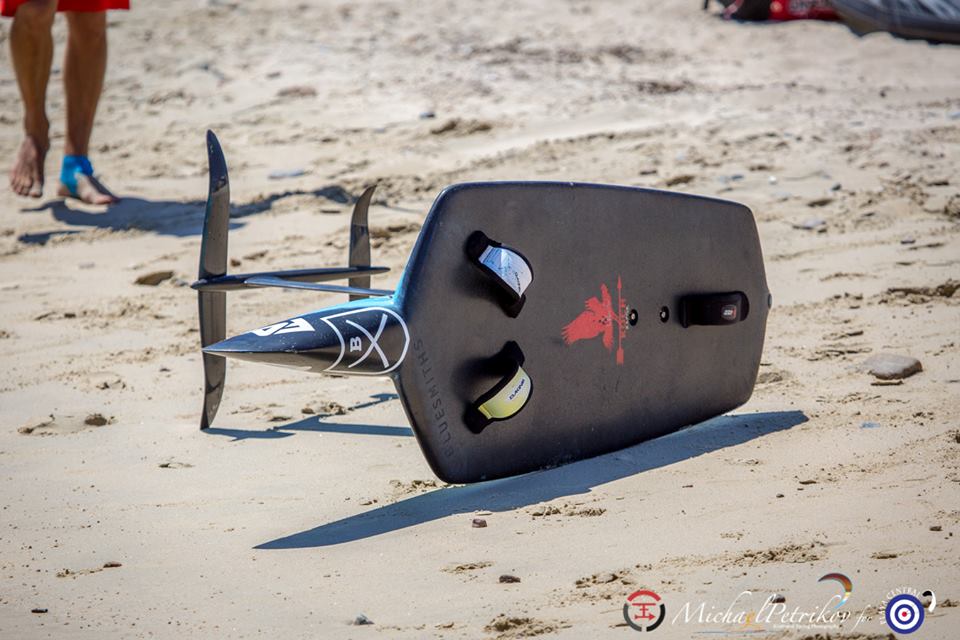
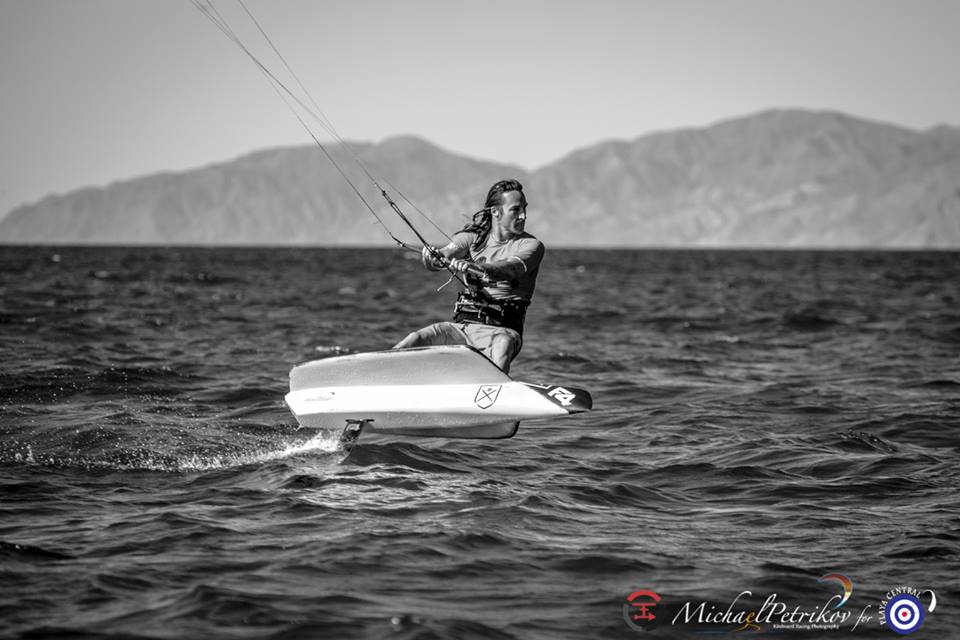
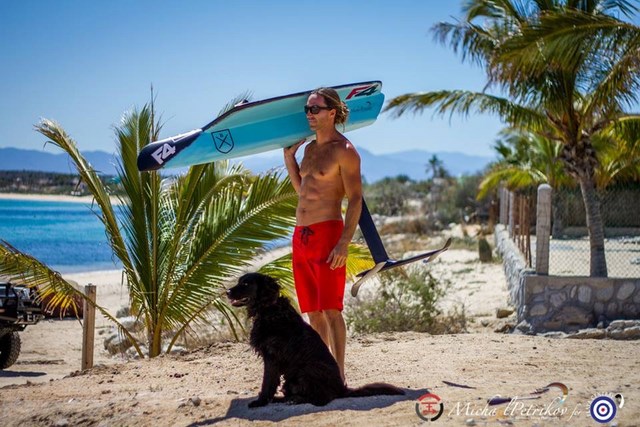

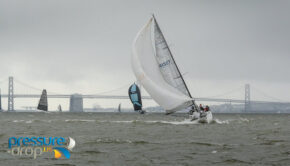
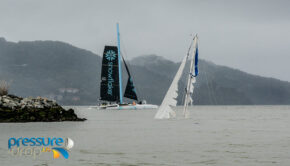
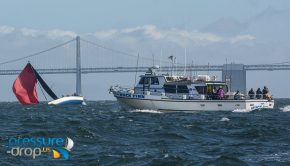

 We’ll keep your information safe.
We’ll keep your information safe.